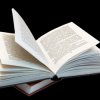Storybook Lesson
Lesson Plans > Language Arts > Writing > Creative WritingStorybook Lesson

Standards:
CCSS.ELA-Literacy.W.3.3 Write narratives to develop real or imagined experiences or events using effective technique, descriptive details, and clear event sequences.
CCSS.ELA-Literacy.W.3.3a Establish a situation and introduce a narrator and/or characters; organize an event sequence that unfolds naturally.
CCSS.ELA-Literacy.W.3.3b Use dialogue and descriptions of actions, thoughts, and feelings to develop experiences and events or show the response of characters to situations.
CCSS.ELA-Literacy.W.3.3c Use temporal words and phrases to signal event order.
CCSS.ELA-Literacy.W.3.3d Provide a sense of closure.
SC VA 3-3: The student will examine the content of works of visual art and use elements from them in creating his or her own works.
VA3-3.2 Select and use subject matter, symbols, and ideas to communicate meaning through his or her artworks.
VA3-3.3 Discuss the ways that choices of subject matter, symbols, and ideas combine to communicate meaning in his or her works of visual art.
Objectives:
Students will create their own narrative story books with prose and collage illustrations. The books will be at least 6 pages long.
The story will establish a situation and introduce a narrator and/or characters. Events will unfold in a natural sequence.
The story will use dialogue, descriptions of actions, thoughts, and feelings to develop experiences and events or show the response of characters to situations.
The story will use temporal words and phrases to signal event order.
The ending will provide a sense of closure.
Students will draw inspiration from other story books in creating their own.
Students will select and use subject matter, symbols, and ideas to communicate their stories through their artworks.
Students will discuss their choices of subject matter, symbols, and ideas combine to communicate meaning in his or her works of visual art.
Assessment:
The teacher will circulate the classroom and monitor student progress.
Students will turn in their completed storybooks for evaluation. The teacher will look to see if they included the following elements:
The book is at least 6 pages long.
The story established a situation.
The story includes a narrator and/or characters.
The story has a sequence of events that unfold naturally.
The story includes dialogue and descriptions of actions, thoughts, and feelings to develop experiences and events or show the response of characters to situations.
The story uses temporal words and phrases to describe event order.
The ending provides a sense of closure.
The artwork uses appropriate subject matter, symbols, and ideas to communicate the story.
The students will present their books to the class, read them aloud while showing the pictures, then describe their inspirations for the story and artwork.
Materials: white paper, colored tissue paper, glue, colored pencils, yarn for binding, storybooks for inspiration
Procedure:
The teacher will give the students time to look at existing storybooks. Students will be encouraged to take notes about things they like and do not like about the books they examine.
The class will brainstorm ideas for stories together. The teacher will choose an example and draw a storyboard to model how the students can plan their books. After the storyboard is complete, the teacher will model how a page of the book could be refined from the storyboard version by drawing a sample page on the board. She will describe the elements that a story needs such as characters, a sequence of events, etc.
The teacher will talk about what a collage is and how they are made, while showing examples.
Students will be given time to brainstorm on their own and talk to their neighbors in order to polish their ideas. The teacher will circulate and help anyone who is struggling.
The students will be given white paper, colored tissue paper, glue, and colored pencils to use in making their storybooks. They will be given 15 minutes per day for six days to make a page of their books each day. The teacher will provide assistance and guidance to those who need it.
After everyone has finished, the teacher will collect the books to grade.
Once the teacher has had a chance to grade the books, they will be handed out and each student will present his/her book to the class. They will read their book aloud, talk about their inspirations, and describe the pictures.
Addressing Differences:
Early Finishers - Early finishers will be paired with struggling students to help them with their projects. If there are no students that need help, then early finishers will read books of their choice until the rest of the class is finished.
Struggling Students - Struggling students will be given more guidance from the teacher to help get them started and then be paired with early finishers if they continue to have trouble.
Special Education - Each special education student can be assigned an adapted version of the project to suit his or her needs. This may include a different type of artwork other than collage, dictating the written part of the story to the teacher, or any other change that is needed.
English Language Learners - Depending on their levels of English proficiency, ELL students can be allowed to rely more on their pictures to communicate their stories and write at a level that is appropriate for them.
Culturally Diverse - Since the stories students write can come from personal experiences, this is an opportunity for culturally diverse students to express themselves and share their culture through their books. If a student is unfamiliar with storybooks, then the teacher should take extra care to re-explain the assignment if necessary.

